I have to analyze the activity of users who uses an application during a given period, periods are start and end timestamp. I tried with a bar chart but I do not know how to include hours in interval. Ex : user with uid=2 use the application at [18, 19, 20, 21]
My dataframe is like:
uid sex start end
1 0 2000-01-28 16:47:00 2000-01-28 17:47:00
2 1 2000-01-28 18:07:00 2000-01-28 21:47:00
3 1 2000-01-28 18:47:00 2000-01-28 20:17:00
4 0 2000-01-28 08:00:00 2000-01-28 10:00:00
5 1 2000-01-28 02:05:00 2000-01-28 02:30:00
6 0 2000-01-28 15:10:00 2000-01-28 18:04:00
7 0 2000-01-28 01:50:00 2000-01-28 03:00:00
df['hour_s'] = pd.to_datetime(df['start']).apply(lambda x: x.hour)
df['hour_e'] = pd.to_datetime(df['end']).apply(lambda x: x.hour)
uid sex start end hour_s hour_e
1 0 2000-01-28 16:47:00 2000-01-28 17:47:00 16 17
2 1 2000-01-28 18:07:00 2000-01-28 21:47:00 18 21
3 1 2000-01-28 18:47:00 2000-01-28 20:17:00 18 20
4 0 2000-01-28 08:00:00 2000-01-28 10:00:00 08 10
5 1 2000-01-28 02:05:00 2000-01-28 02:30:00 02 02
6 0 2000-01-28 15:10:00 2000-01-28 18:04:00 15 18
7 0 2000-01-28 01:50:00 2000-01-28 03:00:00 01 03
I have to find number of users in a specifc hours
